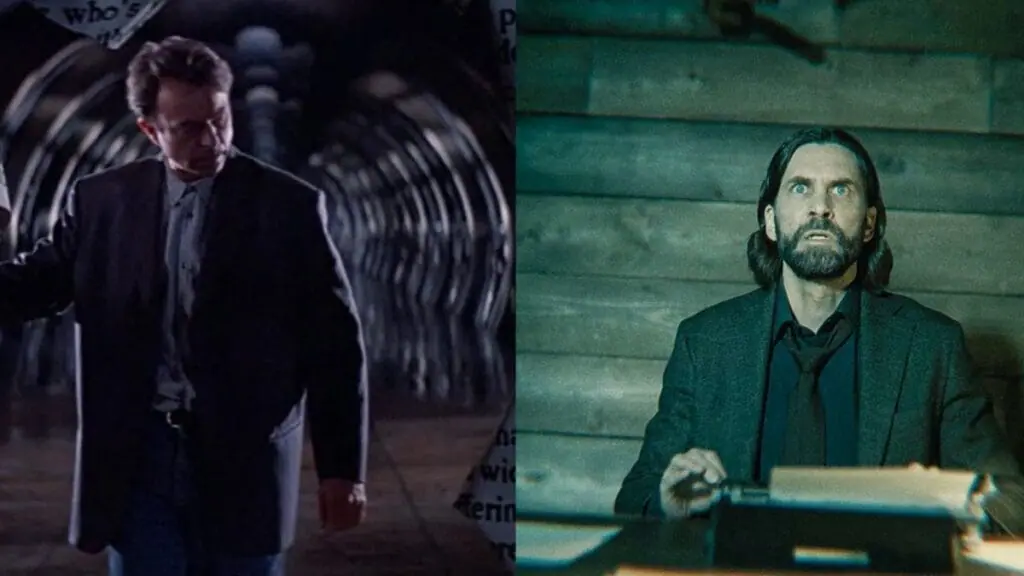Skip To...
Alan Wake 2 is here, and what’s better than a horror film to accompany it. The sequel leans into frightening elements to create a much scarier experience than the first game. Both games borrow heavily from classic horror novelists like H. P. Lovecraft and Stephen King. Alan Wake was unfairly ignored as it came out, but critics and fans championed it into a position of prominence. John Carpenter’s In the Mouth of Madness has a lot in common with the game, making it a perfect companion piece.
Alan Wake Tells a Story About an Author

The titular Alan Wake is a bestselling crime fiction novelist who experiences events from a novel he doesn’t remember writing. He has struggled with writer’s block for two years, and he expects a brief vacation to a sleepy mountain town will help. His dreams begin to come true, while his hallucinations follow a discovered manuscript with his name on it. Conversely, In the Mouth of Madness follows John Trent, an insurance investigator seeking author Sutter Cane, who has disappeared. Trent finds Cane’s editor, Linda, and winds up in Cane’s fictional town. Both stories center on hallucinations, otherworldly beings, and recorded events that break through into reality. These narrative elements didn’t appear accidentally. They’re open allusions to the endless works of Stephen King.
Unlike Alan Wake, John Carpenter’s 1989 horror film never found mainstream approval. Alan Wake frequently finds itself among various best-of lists. Remedy’s later titles, like Control, drew newcomers to the title. In the Mouth of Madness was a box-office failure with a middling critical reception. I’d charitably call it a cult film, my fondness for the piece notwithstanding. Lovecraftian horror was not as routine on the big screen as it is now. Cosmic horror bleeds through In the Mouth of Madness, right down to the reference in the title. The subgenre touches Alan Wake but is filtered through Stephen King. The connective tissue all flows through King.
A Likeness of Tone

Finding a horror movie to match Alan Wake is easy enough. Find some similar themes, a Stephen King reference here and there, and elements of questionable sanity, and the job is done. In the Mouth of Madness delivers a synergy of tone. The sharp changes in mood keep you on edge. The sudden fourth wall breaks seem to take the themes into reality. The most fascinating difference between the film and the game is their perspective. Alan Wake centers around the author, while In the Mouth of Madness follows a dull businessman looking for Sutter Cane. One asks you to dive into your mind, while the other draws you into someone else’s. Without wishing to spoil, the shift in perspective helps to explain why one story ends with laughter while the other collapses into paranoia.
In the Mouth of Madness deserves more attention, even if it has to come from being Alan Wake‘s horror film counterpart. The decades between the movie and the game pose a fascinating study in shifting adaptation. If you want a sillier, 90s horror film answer to Alan Wake, look no further than In the Mouth of Madness.







